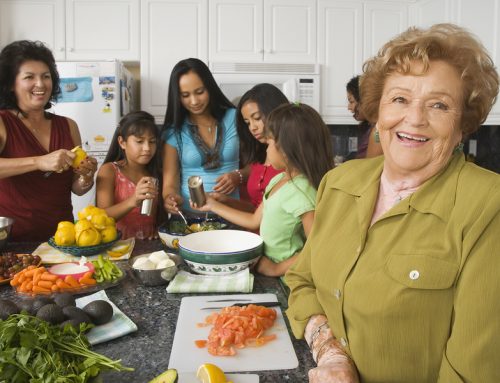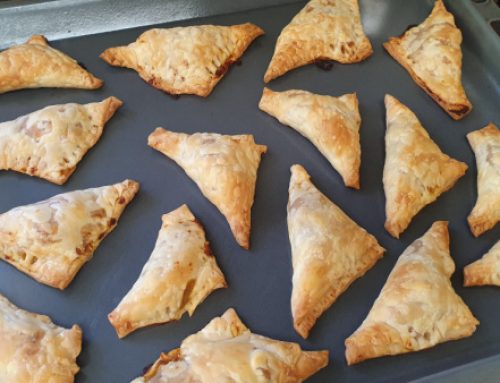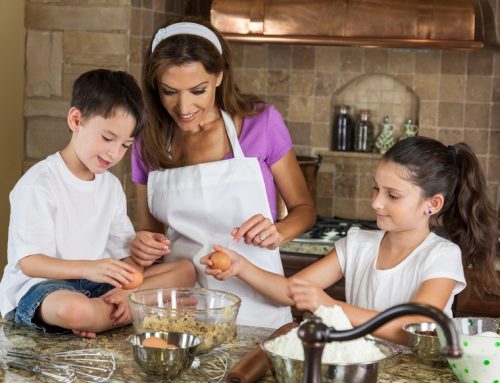What is maths? According to Wikipedia, “ it is the study of quantity, structure, space and change”. Sounds complicate? Actually it is not!
You see, maths is alive! It is being applied every second of the day; for example, boiling water in the morning (how many cups/liters of water), frying eggs for breakfast (quantity of eggs), shower (how many liters of water down the drain), buying food from the supermarket, or paying our bills, etc.
In this article, I am particularly interested in introducing methods where you can introduce mathematical concepts in your daily vocabulary and activities.
How? By sharing and including your child in your daily chores and activities!
Let me share this example with you. I remember following my grandmother to her weekly marketing trip, listening to her bargaining with the fishmongers, helping her to count the change, reading through the shopping list to make sure we got all the ingredients for our dishes, making sure we do not miss our bus home by checking the time, and so much more.
When I look back, I realised those marketing trips not only were wonderful memories of my time with my grandmother, but by helping my grandmother handle her change, making sure I checked my watch so that we did not miss the bus, reading through the shopping list to check for the ingredients for a particular dish: it has helped me to understand the concept of calculations, estimation, reading time. Virtually I was learning the concept of maths.
So Parents, as you can see, it is not complicated to introduce maths to babies, toddlers and preschoolers through every day activities. It just require a bit of creativity.
Babies
For babies, you can introduce songs that involve counting, such as the song “one two three four five, once I caught a fish alive, six seven eight nine ten, then I let it go again…” “One little two little three little Indians, four little five little six little Indians, seven little eight little nine little Indians, ten little Indian boys”… There are so many songs that have numbers out there. Even if they can’t speak, the words are being introduced to their mind.
Toddlers
Introduce shows such as Play School, invest in educational DVDs that have fun programs with numbers, or you can actively tell them to “bring me two lemons” or “take four carrots from the fridge” “add two cups of flour in the mixing bowl“, “I need four forks and two spoons” on the table …
By saying that, you are teaching them the concept of “quantity”. You are saying “two” and “four”? Do you realise that?
Another easy and fun way is to play a number game with them. Be creative, but here is one that I came up with – it is called “one legged hopping game”. Your child will have to use one leg to hop. You can say, “hop three times”, so your child will have to hop “three” times without dropping his or her leg (or they can jump with both legs). Repeat and say “hop seven times” etc. Or “hop to a specific destination, i.e. touch the fridge” and get them to count how many hops they have done, and at the same time, they have to count out loud.
Or if you are in the park, get them to hop everywhere, i.e. hop to touch the swing, see-saw and count out loudly, when you child climbs up the slide, ask your child to count the steps up the slide.…and by the end of the day, not only they are fluent in counting…they are… Yes! You guessed it; they will really appreciate dinner and falling asleep will be a breeze!
So you see, there are so many ways you can introduce “numbers” into your children’s vocabulary and mind. Give it a go!
Preschoolers
I love shopping and I truly enjoyed my grocery shopping experiences with my two now grown up children when they were young. So let’s use grocery shopping with your toddler as an example. Shopping with your preschooler is such a great adventure. Believe me; they are so eager and ever ready to learn; if you give them the right instructions, it will be such fun and a pleasure to have them around.
This is what I did: I gave each of them a shopping list, with very specific requirements, such as 5 ripe tomatoes (which means soft), 1 litre of milk, 500g of broccoli, 6 unripe (means hard) pears (learn vocabulary)… you can get the idea.
So are you ready for shopping with your preschoolers?
Step 1 – Plan your shopping day, i.e. Wednesday
Step 2 – Plan your time to leave for the grocery shopping. Let them know in advance the time you are leaving. Point to them the long and short hand of the clock and let your child know that when the short hand points to a certain number they have to come and get you.
Step 3 – Get your child to help you with the shopping list. Let them know the things that you would like on the shopping list. For example, give your children the responsibility for getting apples and milk. If your child is not reading yet, use old catalogues and cut the pictures of the apples and milk and paste them on the shopping list.
If you would like a richer exercise, you can be a bit more specific; you can say SIX RED APPLES for example. So your child will cut out 6 apples he/she can find from the catalogue; if your child is able to write and identify number 6, then he/she (or you) can write down 6 next to the apples. If not, get your child to cut out six apples or draw apples to make 6.
As for the milk, do the same exercise as above. If you want to create more challenges, state that you want 2 liters milk but you want it in a bottle and not a carton. Note you are stating “volume – 2 liter” and they have to identify “bottle’.
So let’s sum up what your child will learn from this exercise:
Step 1 – Your child will learn the day of the week.
Step 2 – Your child will learn about time and reading numbers.
Step 3 – Your child will learn quantity, identify number, colour,volume and terms of carton and bottle.
Do you see how easy is it to introduce math concepts to your child from everyday activities? Not only will your child enjoy the challenge, you will enjoy his or her company during grocery shopping as well, as he or she will be focusing on the task ahead and not so much on junk food!
You can use this concept with your older primary school children. Change the task and make it a bit challenging. They will love the challenge…and it’s a fun and a very inexpensive outing!
By involving your children, you can create tremendous connections with them through this fun challenge!
One more very important thing, always finish off a challenge with a REWARD! My reward is that they can each choose ONE item that is no more than $2 from the shelf (or save the money as pocket-money).
Happy Counting!
P.S. I’d love to hear your thoughts. Share your comment below or via the Facebook Page.







Leave A Comment